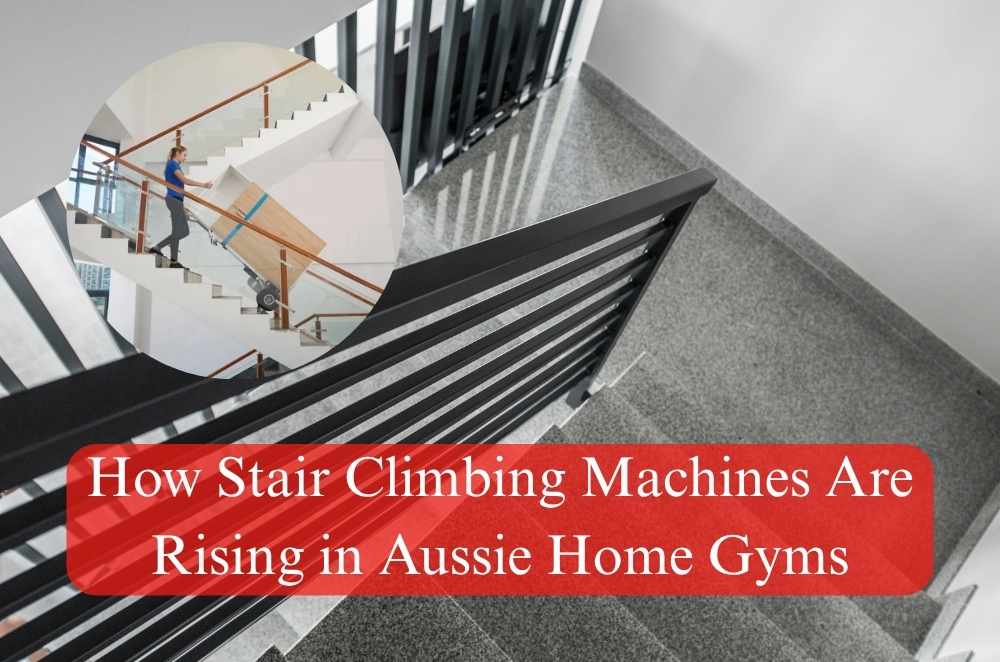
If you’ve ever lugged a fridge or keg up a staircase, you already know—it’s no joke. Dangerous, too. That’s where a powered stair climbing trolley comes in. It’s not just a convenience thing—it’s all rolled into safety, efficiency, and injury prevention. Over the years, I’ve worked with several logistics teams dealing with back injuries and time-wasting stair runs. The difference was huge once they brought in powered stair climbers: Fewer strains, faster jobs, and better morale. And here’s the kicker—most of those teams didn’t realise how much risk they were carrying until they made the switch. What looked like a minor upgrade was a game-changer for both productivity and worker wellbeing. Let’s unpack why they’re worth the upgrade.
They help prevent injury and fatigue
Most manual handling injuries happen on stairs. Awkward lifting, poor form, overloaded trolleys—it’s a mess waiting to happen. And once someone goes down? You’re looking at weeks off work and a fair chunk in workers' comp.
Powered stair climbers handle the heavy part. Motorised lifting, proper balance, and climbing tracks do most of the work, so your team doesn’t have to.
One warehouse I worked with had two injury claims in one quarter—both stair-related. They switched to powered climbers and haven’t had a single report since.
Why it matters:
Reduces lifting strain by up to 100%
Helps keep posture aligned and controlled
Tackles steep stairs without awkward leaning
Big drop in back injuries and fatigue
They align with safety regulations
Manual handling’s a big-ticket item under Australian WHS law—and for good reason. It’s one of the top causes of workplace injuries, especially in logistics, warehouses, and trades.
Powered stair trolleys help meet your obligations under workplace health and safety rules. They reduce lift-and-carry risks, support your Safe Work Method Statements (SWMS), and tick a lot of boxes in audits.
Here’s a detailed overview of manual handling safety regulations if you need it.
Perks include:
Cuts high-risk lift tasks (above shoulders or below knees)
Strengthens your compliance documentation
Makes your next OHS audit a whole lot smoother
They’re more versatile than you think
Most people reckon stair climbers are only for bulky, heavy jobs—but they’re smarter than that now. The newer models work on all sorts of terrain, narrow halls, spiral staircases—you name it.
I know a vending tech who uses one to move machines into old-school offices with no lifts. There are spiral stairs and tight corners, but the trolley handles it with ease, and he's never needed a second person to help.
Key features to look for:
Adjustable climbing speed + stair sensing tech
Non-marking rubber tracks for grip
Collapsible frames that fit in small vans
Controls that actually feel intuitive
Want more ideas? Here’s a practical guide on how to transport heavy items safely, including tips on using and maintaining a hand trolley to prevent strain, equipment damage, or unexpected injuries.
They boost delivery efficiency
When it comes to last-mile deliveries, stairs eat up time. I’ve seen teams lose up to 15–20 minutes per stop just navigating stairs with a heavy load. Multiply that by eight deliveries, and you’ve lost hours.
With powered climbers, that time melts away. No more waiting for backup. No more slow, careful lifting up dodgy old steps.
A drinks distributor I worked with shaved nearly an hour off their daily runs per driver once they made the switch. That’s not just faster—it’s money back in your pocket.
What they improve:
Faster deliveries on stair-only jobs
Cuts the need for two-person lifting teams
Shorter loading/unloading cycles
Maintenance and longevity
These things are tough, but like any equipment, they need love to last. The good news is that electric models tend to have less wear and tear than traditional trolleys.
Check your battery, clean the tracks, and give everything a once-over weekly. I’ve got clients who’ve run their climbers hard for years with just a bit of basic care.
Maintenance musts:
Charge batteries regularly and monitor cycles
Keep track treads clean and grit-free
Lube moving bits for smoother glide
Book yearly servicing—saves you stress later
They support ergonomic best practice
Your crew isn’t made of steel; treating them like machines only leads to burnout. Repetitive lifting, twisting, awkward postures… it adds up.
Electric stair climbers are part of a more significant shift toward ergonomic delivery setups. They help teams stay safer, work longer, and feel better at the end of the day.
The article on ergonomic equipment for delivery teams has more on this trend.
They deliver return on investment fast
One pushback I hear a lot? “It’s too expensive.” But here’s the thing—most businesses recoup the cost of a powered stair climber in under a year. Between fewer injury claims, faster delivery runs, and lower labour overheads, the savings stack up quickly.
I worked with a small courier firm that did the math after buying two units. They saved $11,000 in reduced overtime and injury costs in the first six months alone. And now, their staff actually wants to take the tougher delivery runs.
Here’s a quick breakdown of how powered stair climbers can improve performance metrics compared to manual handling:

Table showing time, injury rate, labour needs, and cost savings before and after using powered stair climbing trolleys in delivery operations.
They shine in tricky, real-world conditions
Let’s be honest—most jobs don’t happen on wide, perfect staircases. They happen in dodgy basements, tight back entrances, and awkward residential blocks with no lift and barely any landing space.
Electric stair climbers are built for that. I’ve seen them used on uneven concrete stairs in an old pub, up timber steps in heritage homes, and even across double-storey mezzanines in factories. The machines handle it all—without drama.
Final thoughts
If your job involves stairs, ignoring the risks is asking for trouble. One bad lift can sideline a worker, or worse, set off a chain of costs and lost time. An electric stair-climbing trolley changes the game. You get speed, safety, and stamina—all in one. This isn't some luxury gadget, from warehouses to hospitals to multi-level office blocks. It’s the tool that keeps people moving, safely and smartly.








Write a comment ...